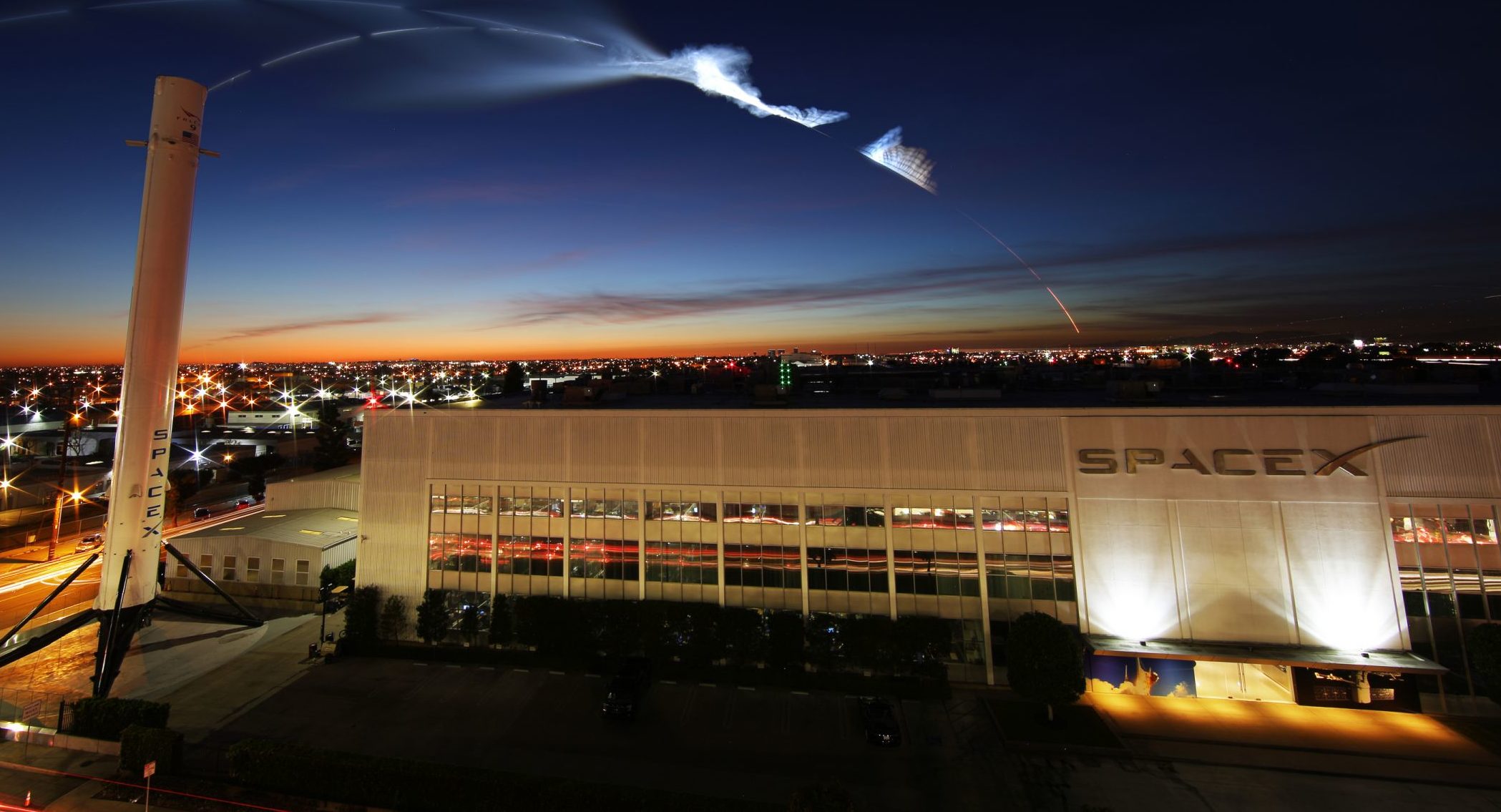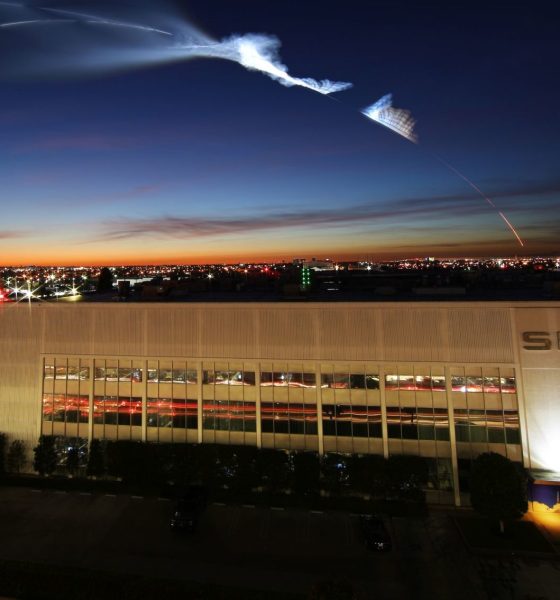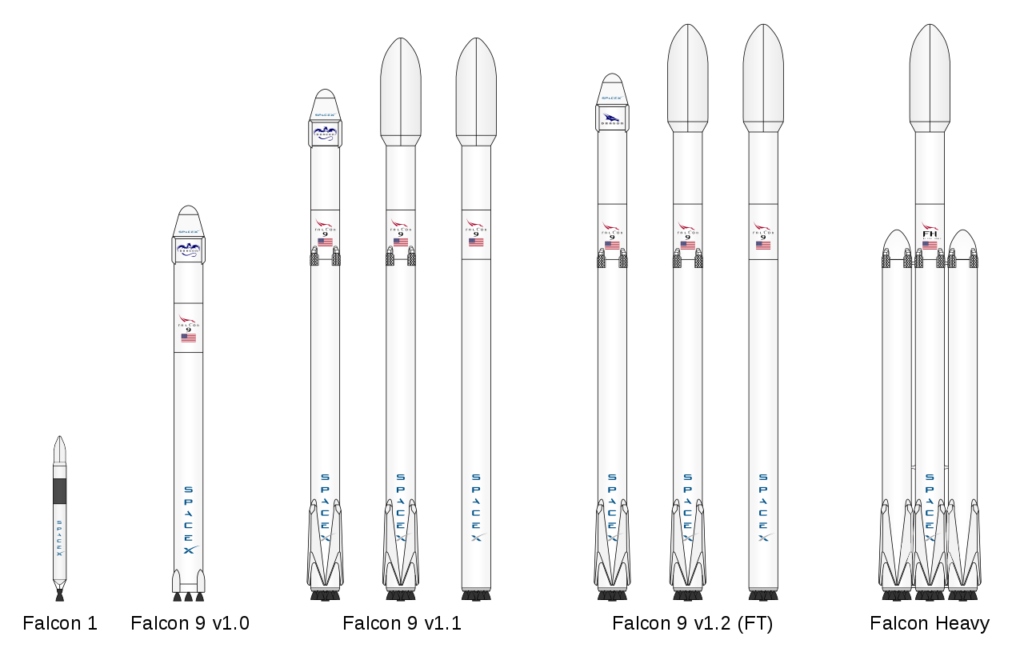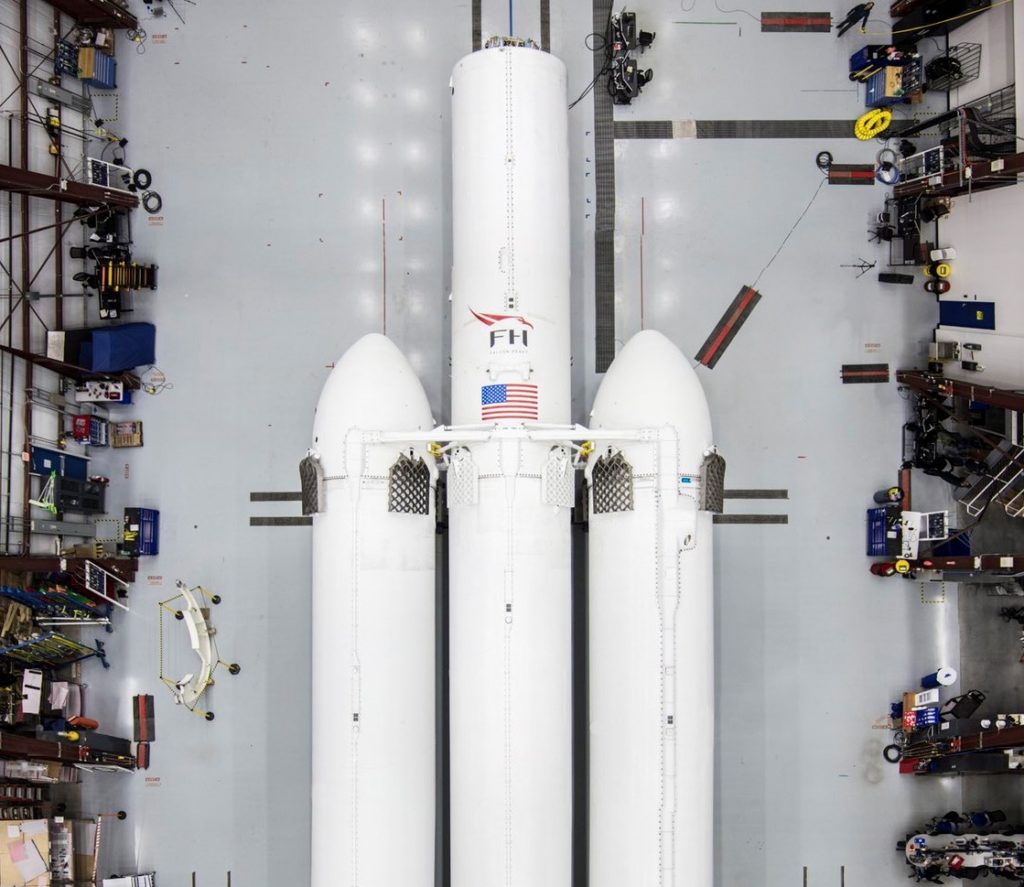

News
SpaceX may perfect reusable rockets in 2018: Evolution in the Falcons’ Nest
2017 has in almost every respect been an unrivaled halcyon year for SpaceX: over the course of its twelves months, SpaceX has returned to flight, begun reusing Falcon 9 boosters, and overall completed 18/18 successful launches and 15/15 first stage recoveries – five of which were commercial reuses of ‘flight-proven’ boosters. It is difficult to fathom how the year could have been more successful, aside from a slight hiccup with fairing manufacturing that may have prevented the launch company from racking up 20 or more missions in 2017.
And yet, despite the flooring and incontrovertible triumphs, I can state with confidence that, barring any serious anomalies, SpaceX’s 2018 docket will utterly eclipse 2017’s varied achievements. This series of articles will act as a sort of preview of SpaceX’s imminent future in 2018, each looking at what the new year may hold for the company’s three most fundamental pursuits: the Falcon rocket family, the Starlink satellite internet initiative, and its ambitions of interplanetary colonization.

Sooty Falcon 9 1035 before its second flight with an also-reused Dragon payload, CRS-13. (Tom Cross/Teslarati)
Falcon finds its wings
While 2015 and 2016 both saw their own hints of potential successes to come, 2017 is the first year that SpaceX managed a truly impressive launch cadence for Falcon 9 without a serious vehicle failure. Every 2017 launch flew on either a Block 3 or Block 4 iteration of Falcon 9 1.2. Esoteric model numbers aside, this simply means that Falcon 9’s design, manufacture, and operation are all maturing rapidly; SpaceX has clearly learned from the CRS-7 and Amos-6 failures and responded accordingly with a more cautious and tempered perspective.
From a historical perspective, it is extraordinarily impressive that Falcon 9 and Cargo Dragon have experienced such a tiny number of failures over their short but active existences. Both Falcon 9 and Dragon have experienced several miscellaneous teething issues and technical difficulties over their ~7 years of launches, but only three anomalies resulted in failures that catastrophically impacted customer payloads: CRS-1, CRS-7, and Amos-6. Thus, out of a total of 46 Falcon 9 launches, approximately 94% have been complete successes. For perspective SpaceX’s first orbital rocket, Falcon 1, experienced total failures during its first three launch attempts, for a success rate of 40%.

SpaceX’s Falcon family of rockets. (Wikipedia)
Barring further flight hardware anomalies in the Falcon family, however, 2018 is likely to be even more of a boon for Falcon 9 (and Falcon Heavy). While Falcon Heavy is set to ring in the new year sometime in January 2018, just a few weeks away, far more significant for SpaceX’s launch business is the debut of the “final” iteration of Falcon 9, dubbed Block 5 or ‘V5,’ likely within the next several months. Block 5 has been heavily modified almost entirely for the sake of more efficient reuse, and will feature titanium grid fins (most recently spotted on Falcon Heavy) and several other changes. Altogether, SpaceX’s public goal is to be able to reuse Falcon 9 Block 5 as many as a dozen times with relative ease, and each booster’s lifespan could potentially be lengthened by a factor of 5-10 with more extensive periodic maintenance.
For now, we only use those on super hot reentry missions. Will go to all Ti with Falcon 9 V5, which is a few months away.
— Elon Musk (@elonmusk) December 17, 2017
This ‘final’ version of Falcon 9 will almost undoubtedly go through its own period of tweaks, changes, and iterative improvements once it debuts and begins to gather flight experience. Nevertheless, it’s plausible that once its minor problems are ironed out, SpaceX will choose to “freeze” the design and begin to aggressively transfer large sections of its engineering and manufacturing base over to the company’s Mars rocket, BFR. Ultimately, the highly reusable Block 5 evolution of Falcon 9 will allow SpaceX to transfer over its customers to reused rockets and thus recoup the cost of reusability R&D far faster than ever before, both by lowering the material cost of launch and enabling a considerably higher frequency of launches.

This crop of Falcon Heavy shows off its side cores, both sporting titanium grid fins that are considerably larger than the original aluminum fins. (SpaceX)
Taken as a whole, the culmination of the Falcon family’s evolution will pave SpaceX’s path to realizing its even wilder ambitions of providing ubiquitous and superior satellite internet and transforming itself into the backbone of crew and cargo transport to the Moon, Mars, and beyond. But that’s a story for another day…
While we wish we could jump forward to the end of 2018 and reflect upon even more incredible SpaceX achievements, you can follow SpaceX’s day by day progress live with our launch photographer Tom Cross on Twitter and Instagram @Teslarati. Significant upcoming events include the ever-secretive launch of Zuma (7:57pm EST, January 4) and the inaugural static fire and launch of the titanic Falcon Heavy (no earlier than Jan. 6 and Jan. 15).

News
Tesla FSD fleet is nearing 7 billion total miles, including 2.5 billion city miles
As can be seen on Tesla’s official FSD webpage, vehicles equipped with the system have now navigated over 6.99 billion miles.

Tesla’s Full Self-Driving (Supervised) fleet is closing in on almost 7 billion total miles driven, as per data posted by the company on its official FSD webpage.
These figures hint at the massive scale of data fueling Tesla’s rapid FSD improvements, which have been quite notable as of late.
FSD mileage milestones
As can be seen on Tesla’s official FSD webpage, vehicles equipped with the system have now navigated over 6.99 billion miles. Tesla owner and avid FSD tester Whole Mars Catalog also shared a screenshot indicating that from the nearly 7 billion miles traveled by the FSD fleet, more than 2.5 billion miles were driven inside cities.
City miles are particularly valuable for complex urban scenarios like unprotected turns, pedestrian interactions, and traffic lights. This is also the difference-maker for FSD, as only complex solutions, such as Waymo’s self-driving taxis, operate similarly on inner-city streets. And even then, incidents such as the San Francisco blackouts have proven challenging for sensor-rich vehicles like Waymos.
Tesla’s data edge
Tesla has a number of advantages in the autonomous vehicle sector, one of which is the size of its fleet and the number of vehicles training FSD on real-world roads. Tesla’s nearly 7 billion FSD miles then allow the company to roll out updates that make its vehicles behave like they are being driven by experienced drivers, even if they are operating on their own.
So notable are Tesla’s improvements to FSD that NVIDIA Director of Robotics Jim Fan, after experiencing FSD v14, noted that the system is the first AI that passes what he described as a “Physical Turing Test.”
“Despite knowing exactly how robot learning works, I still find it magical watching the steering wheel turn by itself. First it feels surreal, next it becomes routine. Then, like the smartphone, taking it away actively hurts. This is how humanity gets rewired and glued to god-like technologies,” Fan wrote in a post on X.
News
Tesla starts showing how FSD will change lives in Europe
Local officials tested the system on narrow country roads and were impressed by FSD’s smooth, human-like driving, with some calling the service a game-changer for everyday life in areas that are far from urban centers.

Tesla has launched Europe’s first public shuttle service using Full Self-Driving (Supervised) in the rural Eifelkreis Bitburg-Prüm region of Germany, demonstrating how the technology can restore independence and mobility for people who struggle with limited transport options.
Local officials tested the system on narrow country roads and were impressed by FSD’s smooth, human-like driving, with some calling the service a game-changer for everyday life in areas that are far from urban centers.
Officials see real impact on rural residents
Arzfeld Mayor Johannes Kuhl and District Administrator Andreas Kruppert personally tested the Tesla shuttle service. This allowed them to see just how well FSD navigated winding lanes and rural roads confidently. Kruppert said, “Autonomous driving sounds like science fiction to many, but we simply see here that it works totally well in rural regions too.” Kuhl, for his part, also noted that FSD “feels like a very experienced driver.”
The pilot complements the area’s “Citizen Bus” program, which provides on-demand rides for elderly residents who can no longer drive themselves. Tesla Europe shared a video of a demonstration of the service, highlighting how FSD gives people their freedom back, even in places where public transport is not as prevalent.
What the Ministry for Economic Affairs and Transport says
Rhineland-Palatinate’s Minister Daniela Schmitt supported the project, praising the collaboration that made this “first of its kind in Europe” possible. As per the ministry, the rural rollout for the service shows FSD’s potential beyond major cities, and it delivers tangible benefits like grocery runs, doctor visits, and social connections for isolated residents.
“Reliable and flexible mobility is especially vital in rural areas. With the launch of a shuttle service using self-driving vehicles (FSD supervised) by Tesla in the Eifelkreis Bitburg-Prüm, an innovative pilot project is now getting underway that complements local community bus services. It is the first project of its kind in Europe.
“The result is a real gain for rural mobility: greater accessibility, more flexibility and tangible benefits for everyday life. A strong signal for innovation, cooperation and future-oriented mobility beyond urban centers,” the ministry wrote in a LinkedIn post.
News
Tesla China quietly posts Robotaxi-related job listing
Tesla China is currently seeking a Low Voltage Electrical Engineer to work on circuit board design for the company’s autonomous vehicles.

Tesla has posted a new job listing in Shanghai explicitly tied to its Robotaxi program, fueling speculation that the company is preparing to launch its dedicated autonomous ride-hailing service in China.
As noted in the listing, Tesla China is currently seeking a Low Voltage Electrical Engineer to work on circuit board design for the company’s autonomous vehicles.
Robotaxi-specific role
The listing, which was shared on social media platform X by industry watcher @tslaming, suggested that Tesla China is looking to fill the role urgently. The job listing itself specifically mentions that the person hired for the role will be working on the Low Voltage Hardware team, which would design the circuit boards that would serve as the nervous system of the Robotaxi.
Key tasks for the role, as indicated in the job listing, include collaboration with PCB layout, firmware, mechanical, program management, and validation teams, among other responsibilities. The role is based in Shanghai.
China Robotaxi launch
China represents a massive potential market for robotaxis, with its dense urban centers and supportive policies in select cities. Tesla has limited permission to roll out FSD in the country, though despite this, its vehicles have been hailed as among the best in the market when it comes to autonomous features. So far, at least, it appears that China supports Tesla’s FSD and Robotaxi rollout.
This was hinted at in November, when Tesla brought the Cybercab to the 8th China International Import Expo (CIIE) in Shanghai, marking the first time that the autonomous two-seater was brought to the Asia-Pacific region. The vehicle, despite not having a release date in China, received a significant amount of interest among the event’s attendees.








